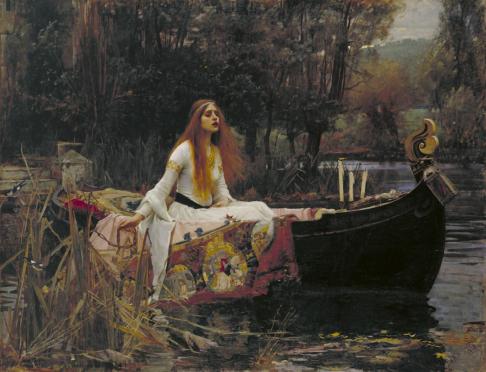“The flower bloomed and faded. The sun rose and sank. The lover loved and went.” (Virginia Woolf)
 Jean-Baptiste Greuze, The Complain of the Watch, 1770
Jean-Baptiste Greuze, The Complain of the Watch, 1770
In a sad room a sad faced young thing is sitting on a chair. Indulged in a wistful reverie, she looks as ethereal and pale as a ghost, so lost in her thoughts that if someone happened to walk into her room, she’d probably seize to notice him. Behind her a bed and a barren wall as grey as her thoughts. Dressed in a loose white dress, an undergarment or a nightgown, the blonde girl is gazing in the distance with a pensive face expression. She’s holding a watch in her hand. Thin rays of sun coming through the small window provide the light in this poorly furnished attic room. Every night when the bells of a near-by church announce midnight, thin-legged spiders walk up and down the walls of her sad abode, greenish from the mould, weaving webs in the corners of the room, weaving webs in every corner of her heart. How could someone so young look so sad? Who dared to fill those blue eyes with tears and burden those slender white shoulders with woe?
Next to the girl is a small table, and on it a basket, some flowers and a letter. A letter which must hide all the secrets of her aching heart, a letter which hides the mystery behind her wistful reverie. I don’t know what the letter says, neither do you, but a little blackbird which sat on my windowsill today knows all the secrets from centuries gone by: he is a time travelling bird. It is a long tale of woe which I hesitate to retell, but I will tell you this: the lover loved and went, leaving nothing but a watch as a memory and empty words of goodbye; I can only assume it took more time for ink to dry than it did for his feelings of affection to cool down. Poor, poor girl, with her Rococo face and her Rococo sadness, what is she to do with her life now? Abandoned, alone, breathing in the perfume of lost hopes and sadness, while her wedding gown is being slowly eaten by moths in the wardrobe, her bouquet of flowers slowly withering as hours linger.



What a wonderful example of « genre art »! Greuze is not as famous as Fragonard or Watteau but he is dearer to me because he is a painter of the heart. The girl has already read the letter and it was probably not a pleasant letter. If you look at paintings of another great artist, Vermeer, who lived one century earlier, you often see young ladies while they are reading a letter. Vermeer doesn’t describe their reaction. The girl’s face betrays almost no emotion and that makes those paintings very modern. Look at Vermeer’s « Woman in Blue Reading a Letter » that I saw in the Rijksmuseum some years ago. Her shape suggests that she is pregnant. He face is motionless but Vermeer indicates other details: there is a map of Holland suspended over her head. But the lines of the map are very irregular. Though the face of the girl denotes no expression it becomes clear that her beloved has abandoned her.
LikeLiked by 1 person
What an interesting observation, about Greuze’s girl showing a reaction to the letter and Vermeer’s girls being mysterious in how they feel about the letter.
LikeLiked by 1 person